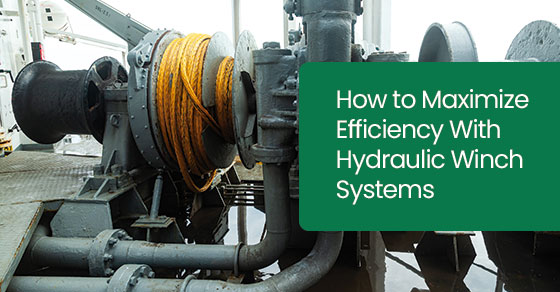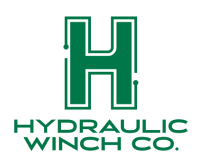
For many years, hydraulic winches have been the workhorse behind heavy-duty operations. They have pulled anchors offshore, hauled timber uphill, and moved rail cars across long distances, day after day.
However, what many teams miss is that just because a system is working, it doesn’t mean it is working well. Over time, even the most reliable winch systems can lose power, waste fuel, slow down, or strain under pressure. These issues don’t always come from age or damage. Sometimes, it is the setup, controls, or the lack of upgrades.
Improving winch efficiency doesn’t centre on starting from scratch, but more on knowing what to adjust. Here is how hydraulic equipment loses performance and how to get it back.
Where Winch Efficiency Is Lost
Winch efficiency often drops long before anyone notices. Most of the time, it is the details being ignored and not the winch itself. Here is where performance usually breaks down:
- Hydraulic pressure mismatch: Every job demands a specific pressure range. If the system runs below specification, the winch struggles to pull. If pressure runs too high, seals and hoses take the hit. As time goes on, this imbalance causes jerky movement, overheating, and internal damage. Output drops and full reliability fades.
- Overheating power packs: When power packs become too hot, the fluid begins to become weaker. It also burns oil, slows movement, and puts a load on the parts that are supposed to be moving. As power packs become even hotter, they break down, and the system’s life is shortened.
- Poor cable routing: Not following the correct paths to run cables leads to friction. Cables that are routed too sharply and guided to tight angles can force the winch to work harder. This extra work consumes energy and leads to ropes getting used up faster.
- Non-specialized components: Generic components fail to fit the frame specs and result in an imbalance in control, power, and precision. The best hydraulic equipment is also limited in efficiency if the system is too generic.
All these simple mistakes are what change powerful winch systems into a slow tool.
Choosing the Right Setup for the Job
Choosing the right setup is the most important step in improving performance. When every part of the system fits the job, operators save time, reduce strain, and avoid breakdowns.
- Winch selection must match the job: Our hydraulic capstan winches are built for steady and continuous pull. They are ideal for long-distance line work and utility applications. Bayonet winches provide higher torque and holding power, which makes them perfect for lifting and anchoring.
- Power packs need to be sized correctly: If the hydraulic equipment delivers too little flow, the winch won’t perform. Matching the flow and pressure to the winch ensures seamless operation and longer life.
- Rope and accessories must fit the application: Using the wrong rope diameter or pulley creates drag and tension issues. Non-matching valves or fittings will, beyond doubt, reduce winch efficiency and control.
Maintenance Drives Long-Term Performance
Maintenance is another way to maximize the performance of winch systems. Below are the basics that should not be skipped:
- Check hydraulic equipment fluid levels and quality: Dirty or low fluid always weakens power and slows responses.
- Inspect and calibrate brakes: Poor braking leads to drift, slippage, or unstable loads.
- Examine lines and ropes: Cuts, kinks, or wear can put winch systems at risk.
- Test system pressure regularly: Imbalances create strain, waste energy, and wear out parts.
Preventive maintenance shouldn’t be viewed as an expense. The outlook should be standard protection that keeps winch systems consistent, safe, and ready for the next usage.
Small Upgrades Can Boost Productivity
Accessory components can turn average winch systems into high-performing tools. To achieve this, engineers must first know what tools to add and how they reduce effort and improve control.
- Dual counterbalance valves improve load stability. They hold pressure when stopping and starting under load. This keeps movement steady when lowering or positioning heavy items.
- Ladder pulleys guide rope in tight or vertical spaces. It reduces friction at sharp angles and protects the line from wear.
- Foot control valves let the operator stay hands-free. This is useful for multitasking, awkward positions, or jobs that require quick direction changes.
When paired with the right hydraulic equipment, these components extend what can be done on any site.
Our Hydraulic Winch Systems Are Built to Work Harder
When equipment doesn’t fit the job, crews lose time; this is always the reality. Loads slip, pressure builds, and parts wear out faster than expected.
Hydraulic Winch Co. prevents this from happening. Our small team in Pendleton, Oregon, builds winch systems that solve real problems. Every unit is designed, assembled, and tested.
Our capstan winches deliver continuous pulling for utility and cable work. Bayonet winches give operators more torque and load control. We also build hydraulic equipment that ties it all together: power packs, manhole kits, and a selection of rope built for strength and flexibility.
These systems work across industries like logging, marine operations, livestock, rail, and heavy transport. If your team relies on power and control in the field, we have likely built something for it.
However, we don’t stop there. Our team helps you choose the right setup, answer your questions, and guide maximizing usage.
If you’re ready to see what purpose-built winch systems can do, call Hydraulic Winch Co. today at 888-511-3956 or contact us online. We will walk you through it.
FAQs
Are hydraulic winch systems safe for use in remote locations?
Yes. Winch systems powered by hydraulic setups are great for remote or off-grid sites. With the right configuration, they don’t rely on external power grids or air supply. This makes them reliable in areas where electric or pneumatic tools don’t work.
Can winch systems be adapted for livestock handling?
Absolutely. Many customers in agriculture use our winch systems for loading feed, lifting gates, or moving trailers. These setups are rugged, low-maintenance, and designed to handle repeated use in tough environments.
Do I need an entirely new setup to improve winch efficiency?
Not always. Maximizing winch efficiency can come down to a small upgrade like a foot control valve, adjusting the layout, or replacing worn rope. A quick conversation with our team can point out what’s worth changing and what can stay.
